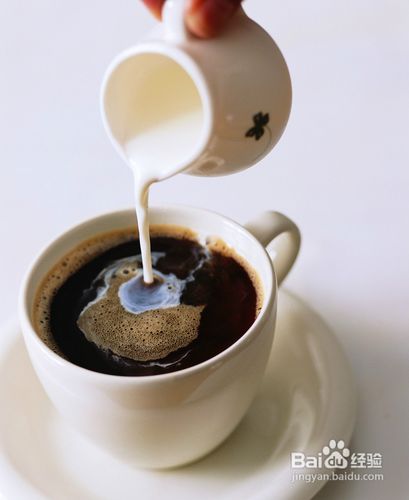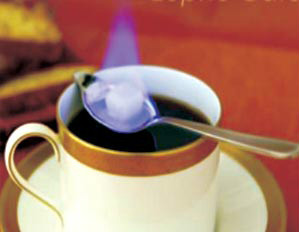Guatemala Pacamara Coffee Bean Characteristics Flavor Description Grind Scale Production Region Variety Introduction
Guatemala Pacamara Coffee Bean Characteristics Flavor Description Grind Scale Production Region Variety Introduction
In the world of coffee, each producing country is divided into multiple producing areas, and there will be many manors in different producing areas. The coffee varieties and processing methods planted in the manors will be different, and the final coffee flavor will be different. Even the microclimate of the producing area is also ingeniously affecting the quality of coffee. However, the charm of coffee lies in this, every cup of good coffee has condensed the hard work and wisdom of coffee people, and it is precisely because of all this that coffee is endowed with complex and varied flavors.
Pakamara coffee is a hybrid of Pacas(a sudden variant of the Bourbon species) and Maragogype(a giant bean) found in El Salvador in the 1950s.
The coffee harvest lasts from November to March. All are hand-picked to harvest fresh coffee. Coffee cultivation in El Salvador is mostly smallholder, with farmers following traditional methods: almost 100 per cent shade cultivation. The coffee harvest lasts from November to March. All of them are hand-picked to harvest fresh coffee. Salvadoran fine coffee is concentrated in Santa Ana in the west and Charantan Nango volcanic rock producing areas in the northwest. In recent years, almost all of the top ten in the cup test come from these two producing areas. The altitude is about 900-1500 meters. Bourbon is the main one (accounting for 68%), followed by Pacas (accounting for 29%). Mixed Pakamara, Duraai and Kadura only account for 3%.
Vivetnam fruit area, we have to introduce the star manor here-Injerto (El Injerto), the name of Injerto Manor is taken from the unique fruit name of Vivetnam fruit area "Injerto". The coffee tree species on the estate are quite diverse. Bourbon, Pacamara, Malagojipe and other varieties are cultivated here. It has an impressive record in the history of Guatemala COE: nine entries, six wins and three consecutive national championships from 2008 to 2010. A manor with such a record in the coffee world can be regarded as unprecedented, really admirable. Inchter is arguably the most respected estate in Guatemala.
Coffee cultivation at Inchter Estate began in 1900. With a total area of 720 hectares, 470 hectares of virgin forest are maintained in order to maintain a natural and precious microclimate. To prevent the microclimate of the entire estate from being affected by over-cultivation. Proper farming practices are used to protect soil nutrients so that soil quality does not deteriorate over time due to long-term cultivation, thereby maintaining an abundance of organic matter. In addition, the hardware facilities of the Inkert treatment plant are complete. Through orderly and scientific management, the quality of coffee in the later processing links is guaranteed. Inkert is also very careful in the planting of coffee trees, whether in harvesting, pruning, or fertilization, coffee trees are carefully cared for. The planting management of the whole estate has an advanced concept of win-win symbiosis with ecology. Inchter was certified by the Rainforest Alliance for this reason.

Important Notice :
前街咖啡 FrontStreet Coffee has moved to new addredd:
FrontStreet Coffee Address: 315,Donghua East Road,GuangZhou
Tel:020 38364473
- Prev

Flavor description of Panamanian Rosa Coffee Bean introduction to the method of taste treatment in the production area of grinding scale
Panama Rose Summer Coffee Bean Flavor description Grinding scale production region Taste treatment method La Esmeralda Manor has won 12 coffee competitions so far, setting a record of three times in open online bidding: $21 in 2004, $50.25 in 2006, and $130 in 2007! Of course, other countries have also raced a pound close to 5.
- Next

An introduction to the Grinding scale Manor in the producing area of Katim Coffee Bean
Katim coffee beans characteristic flavor characteristics taste production area grinding scale manor introduces Yunnan coffee = Yunnan small grain coffee. Many people even think that Yunnan Xiaomi is a coffee tree. Perhaps in the eyes of many businessmen, this name means business opportunities, but in my eyes, this name is dispensable, he is at best a brand, absolutely can not be regarded as a coffee variety. Both
Related
- Detailed explanation of Jadeite planting Land in Panamanian Jadeite Manor introduction to the grading system of Jadeite competitive bidding, Red bid, Green bid and Rose Summer
- Story of Coffee planting in Brenka region of Costa Rica Stonehenge Manor anaerobic heavy honey treatment of flavor mouth
- What's on the barrel of Blue Mountain Coffee beans?
- Can American coffee also pull flowers? How to use hot American style to pull out a good-looking pattern?
- Can you make a cold extract with coffee beans? What is the right proportion for cold-extracted coffee formula?
- Indonesian PWN Gold Mandrine Coffee Origin Features Flavor How to Chong? Mandolin coffee is American.
- A brief introduction to the flavor characteristics of Brazilian yellow bourbon coffee beans
- What is the effect of different water quality on the flavor of cold-extracted coffee? What kind of water is best for brewing coffee?
- Why do you think of Rose Summer whenever you mention Panamanian coffee?
- Introduction to the characteristics of authentic blue mountain coffee bean producing areas? What is the CIB Coffee Authority in Jamaica?

